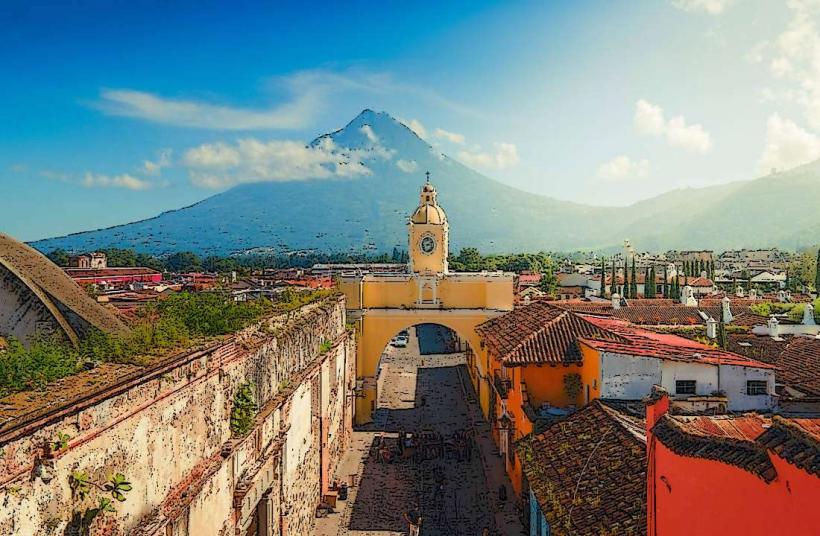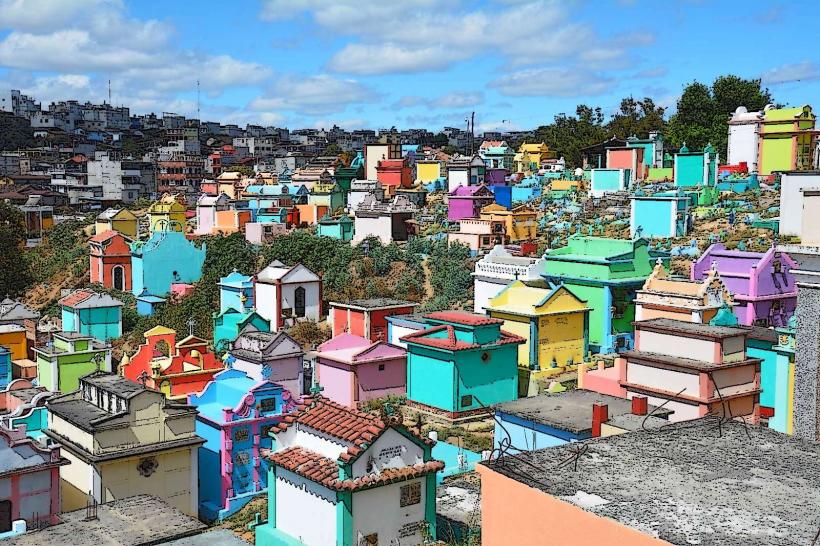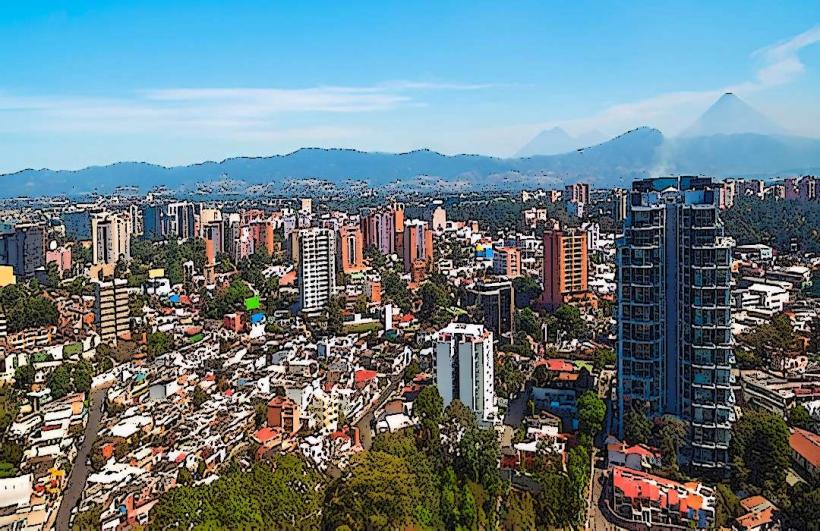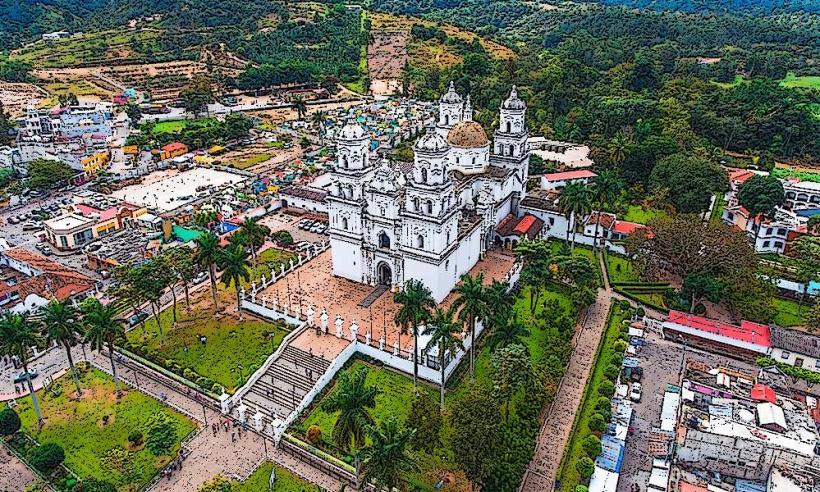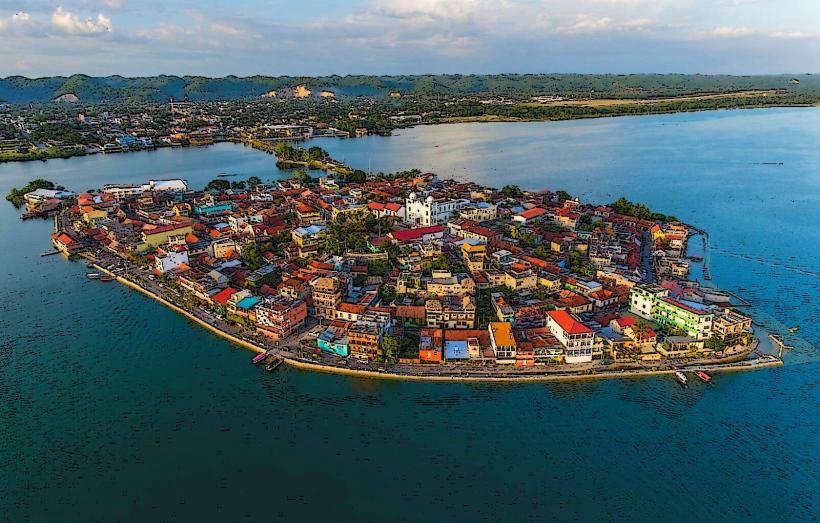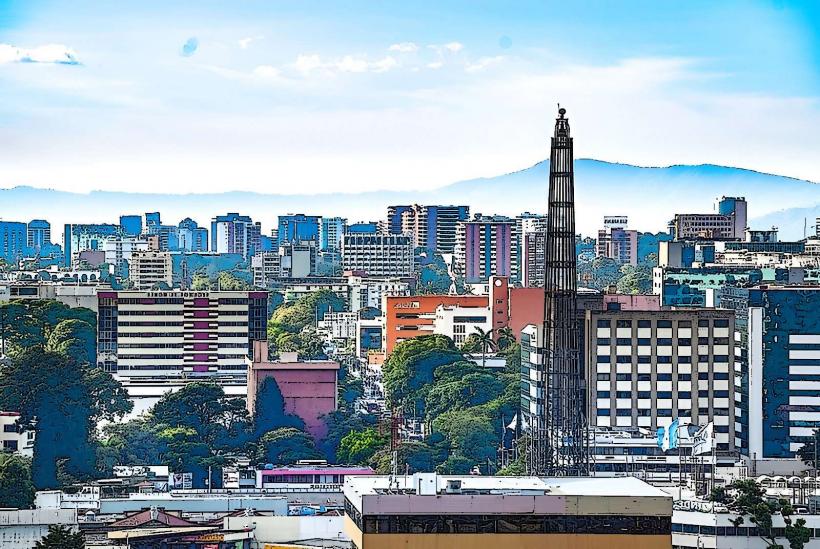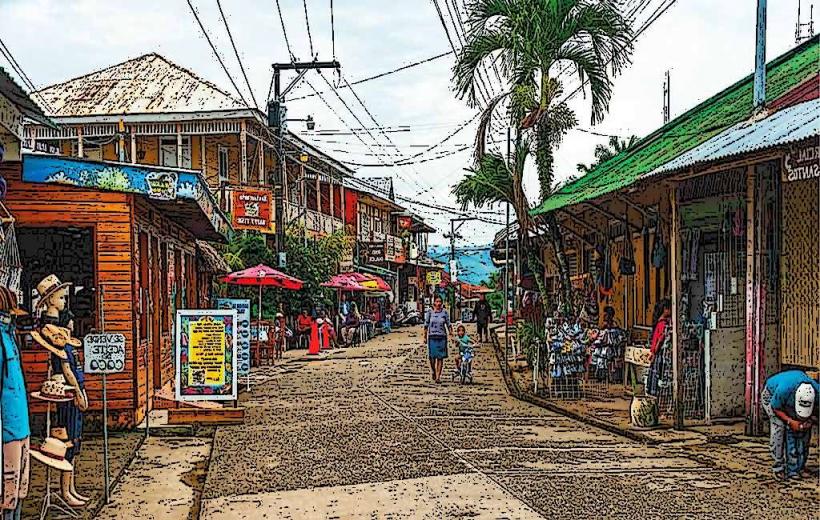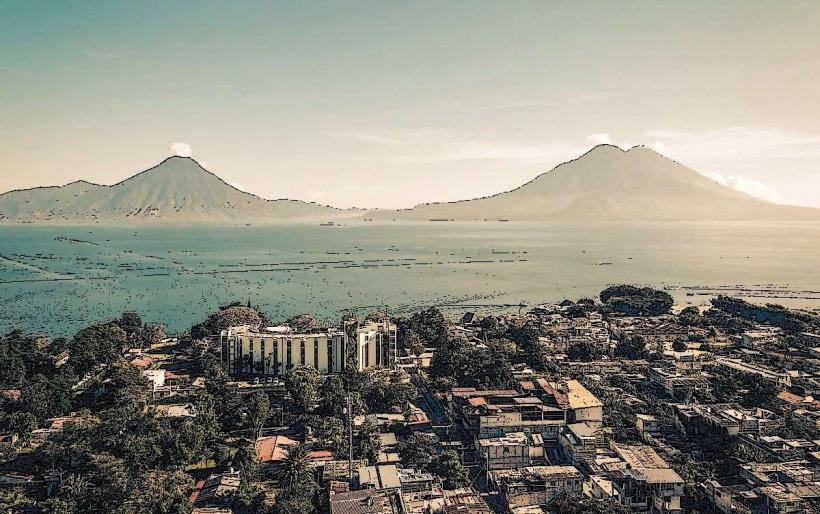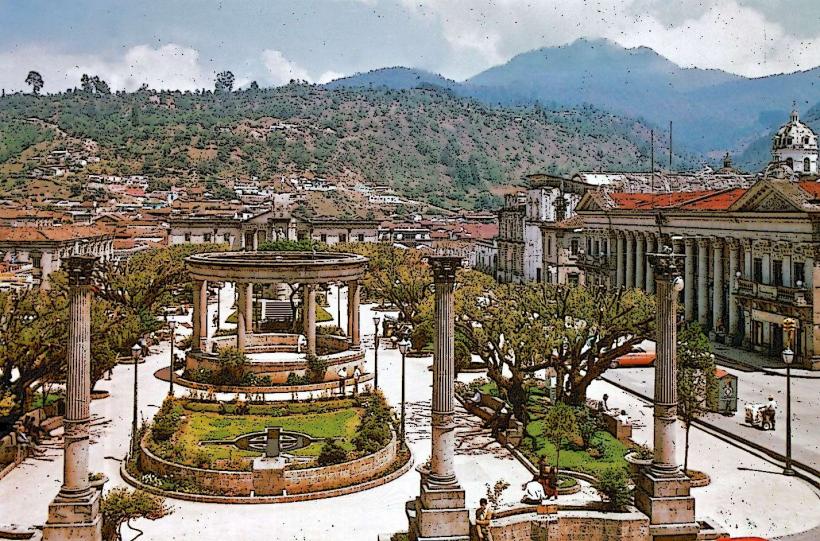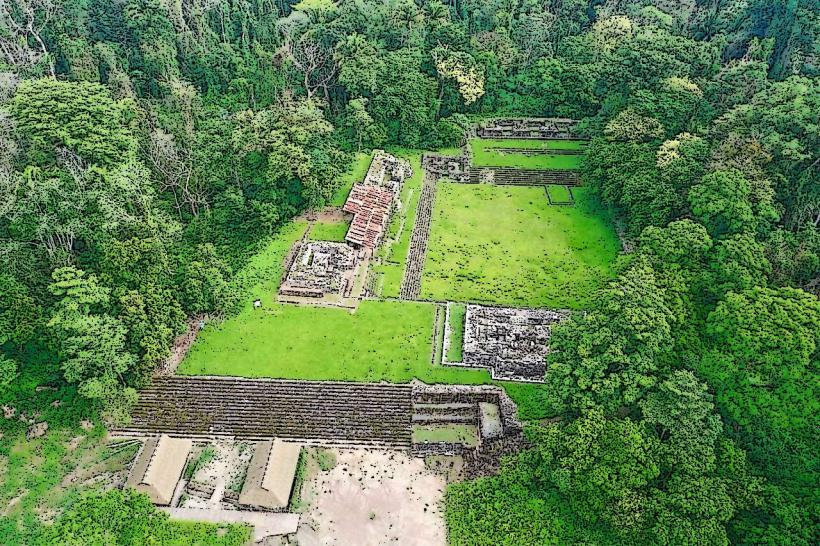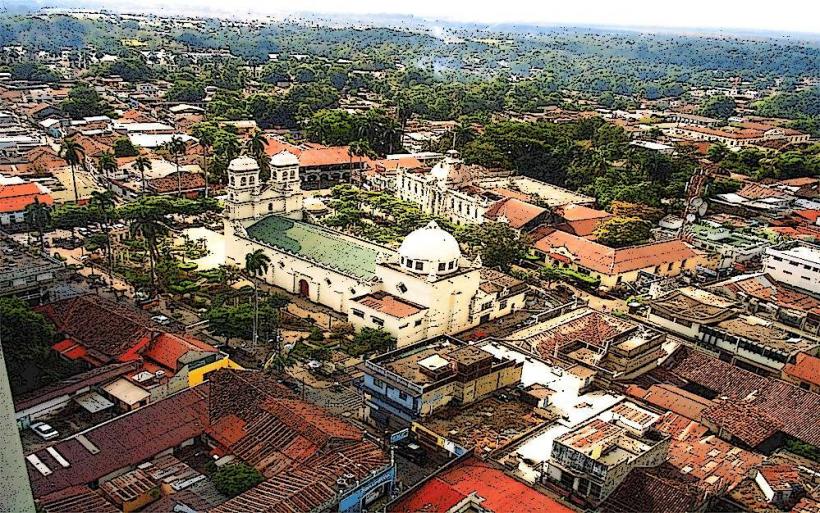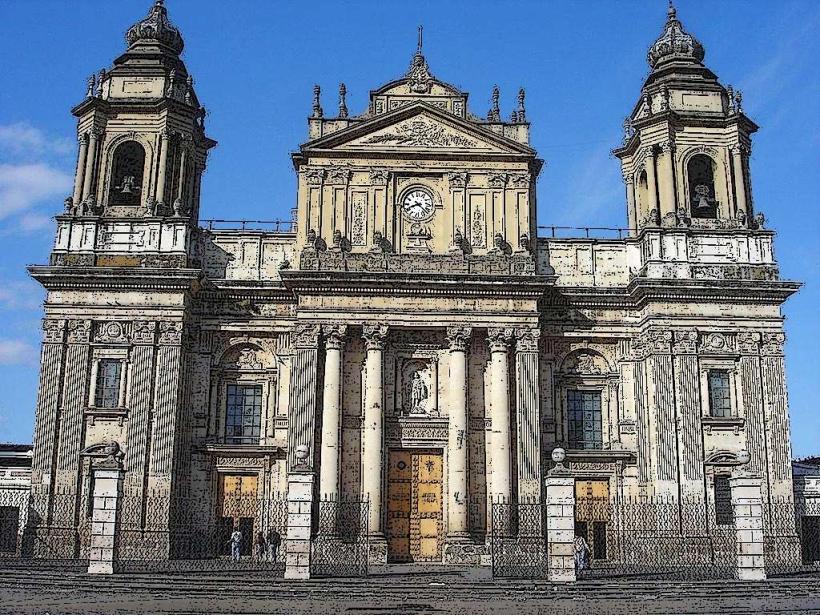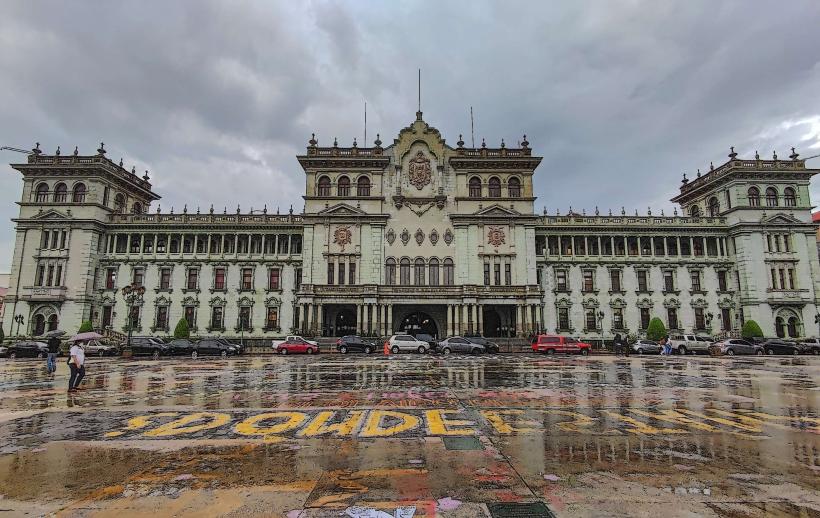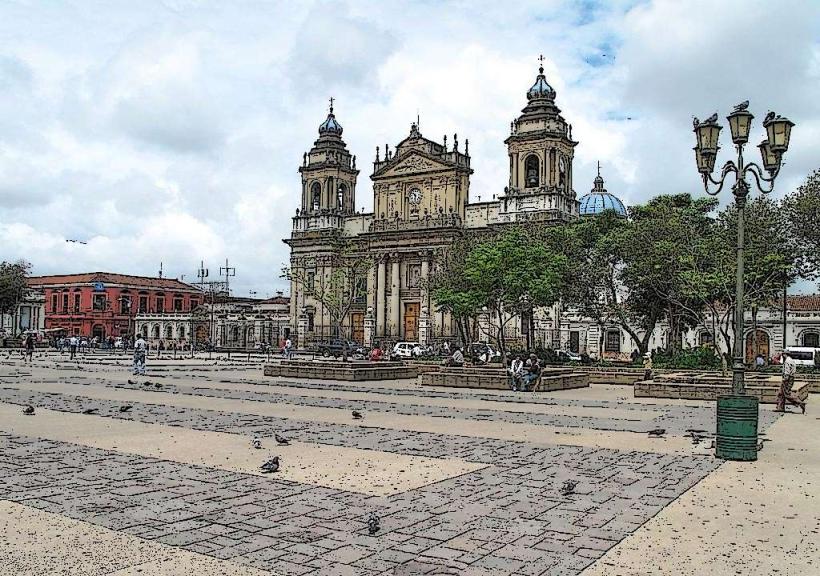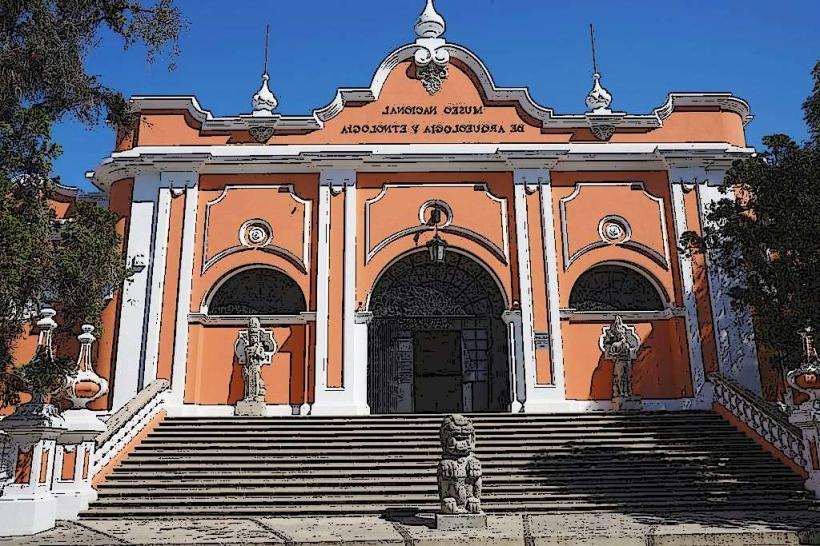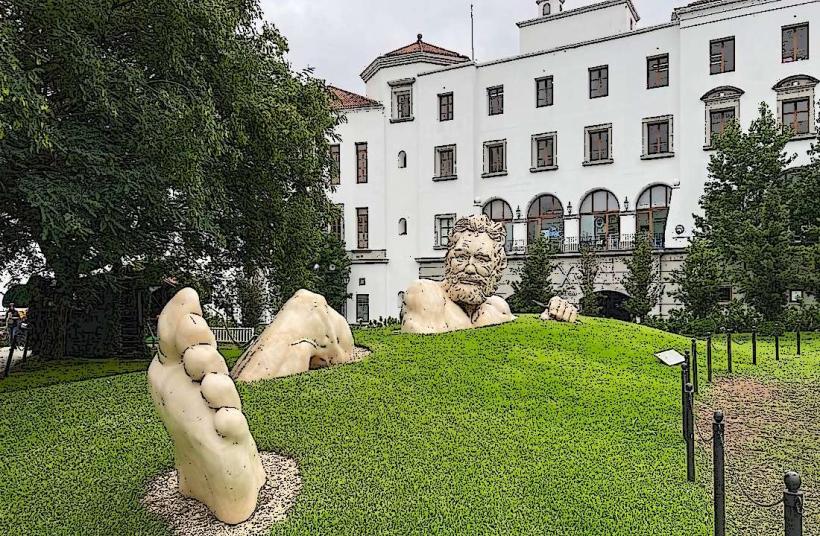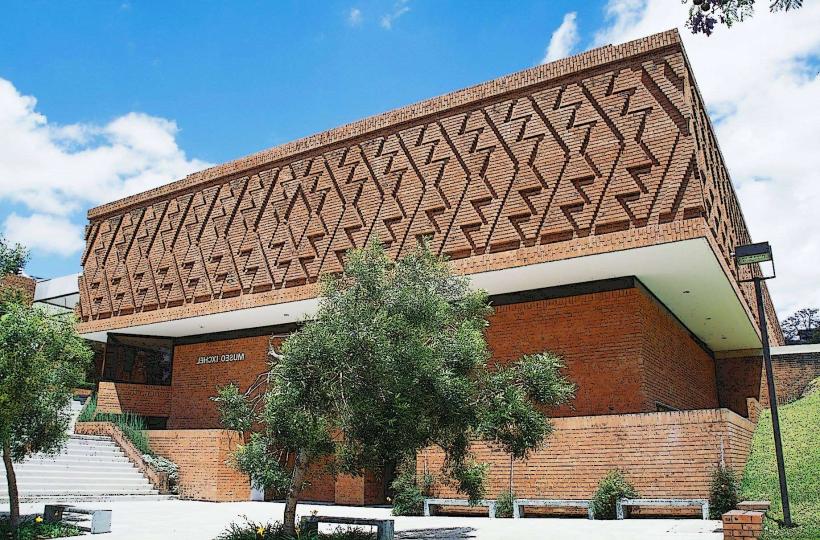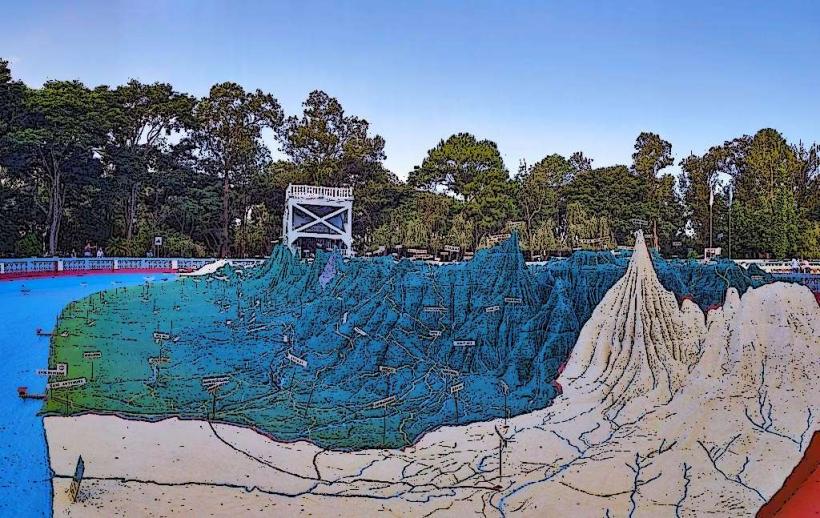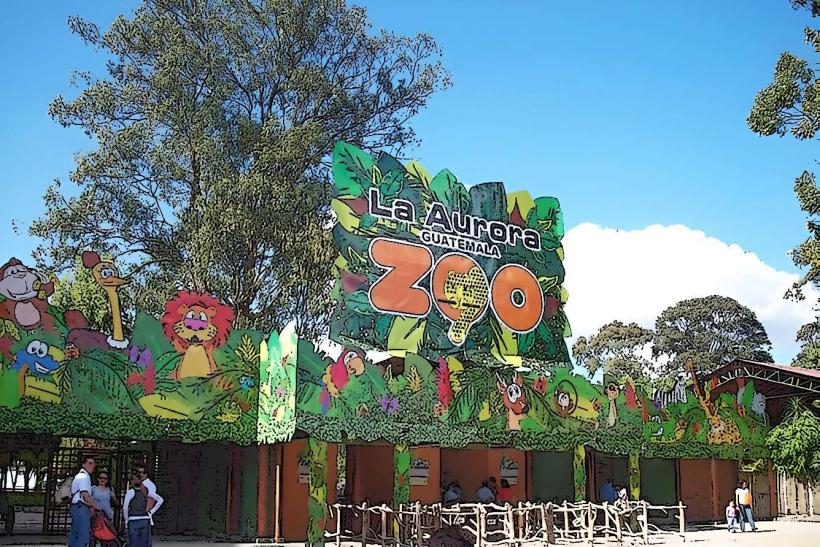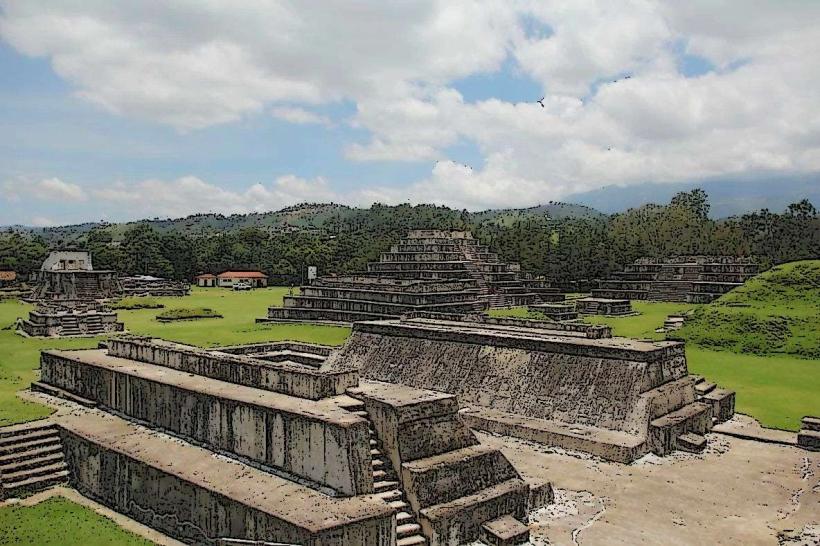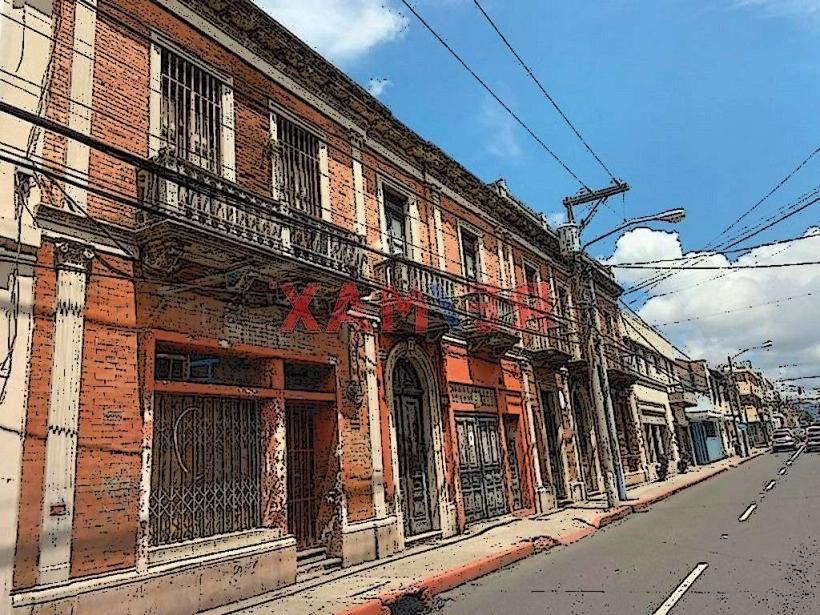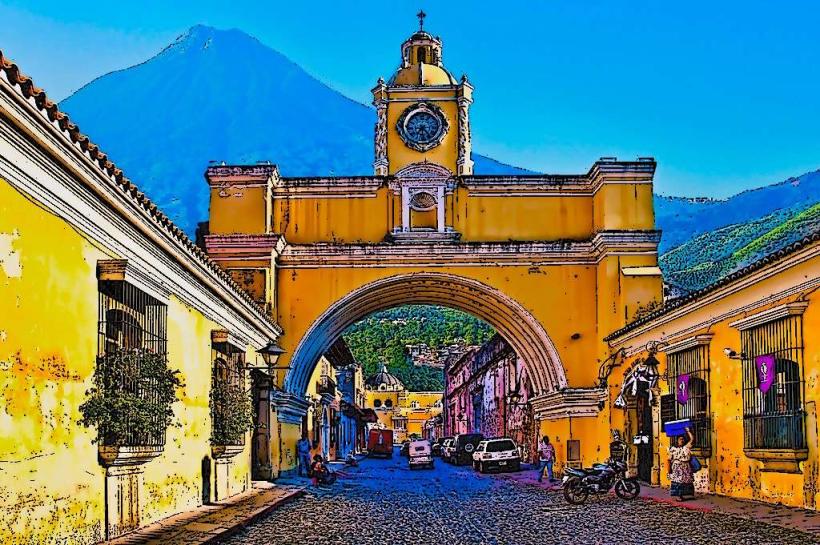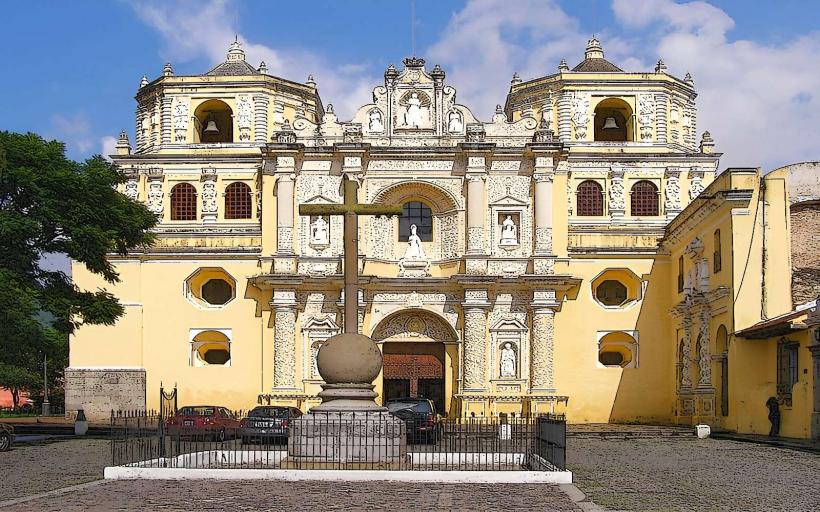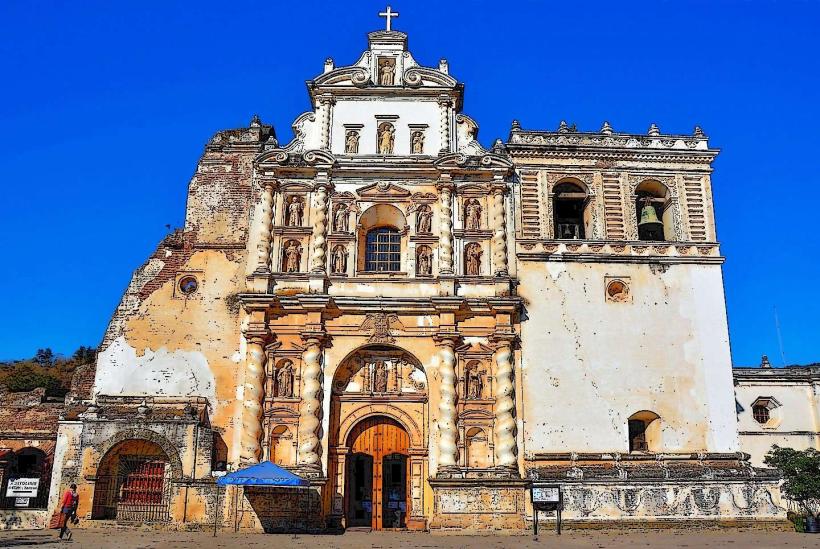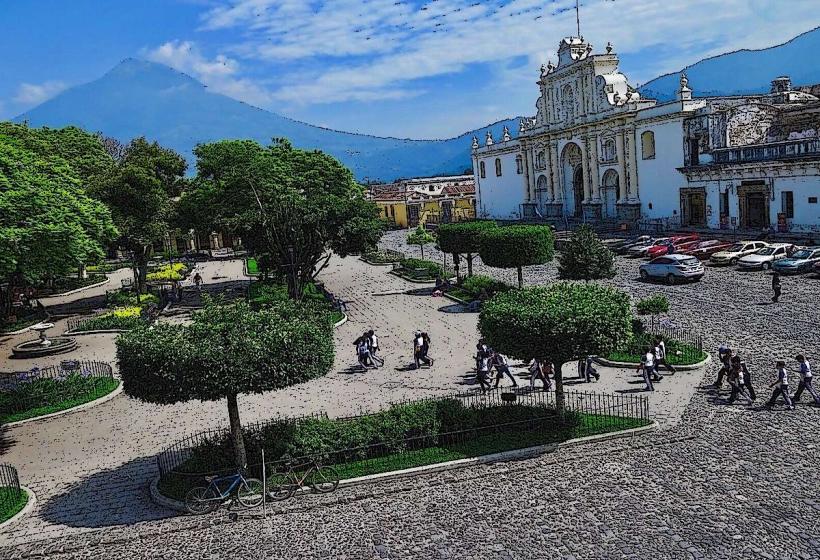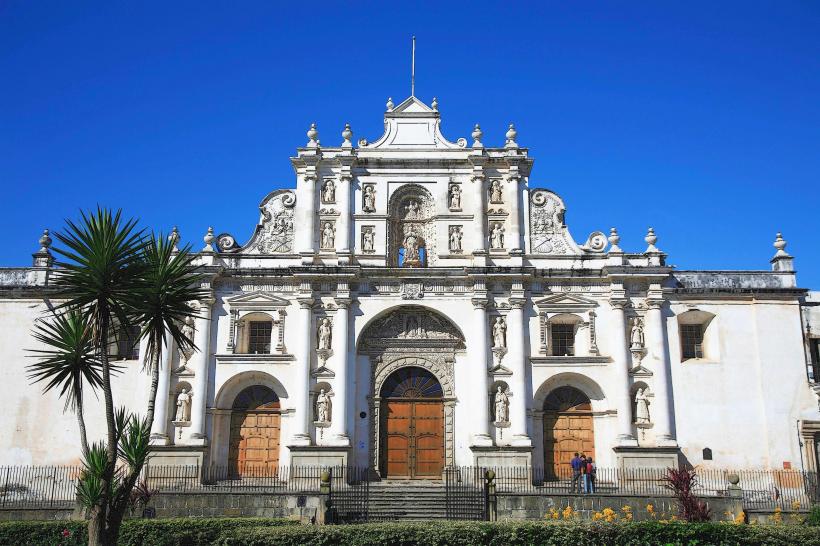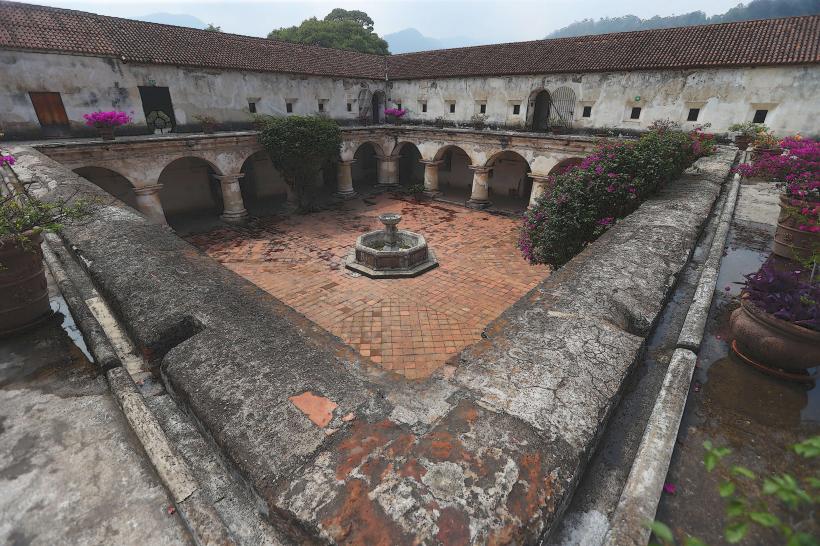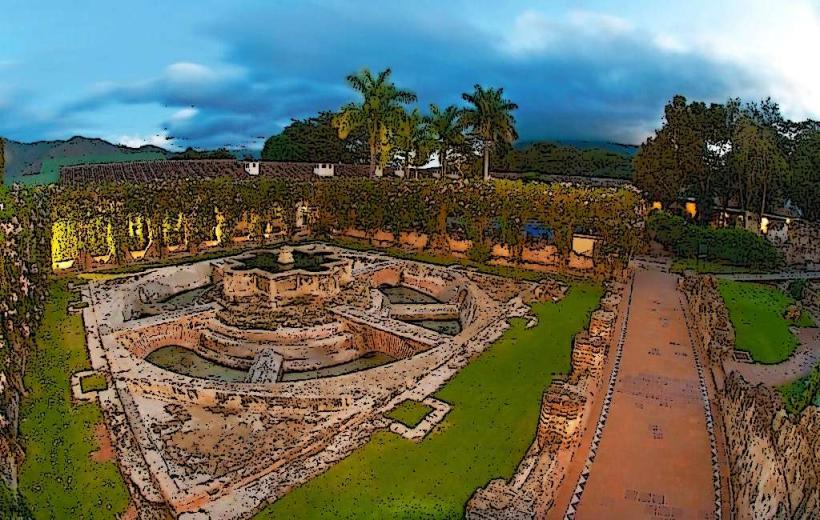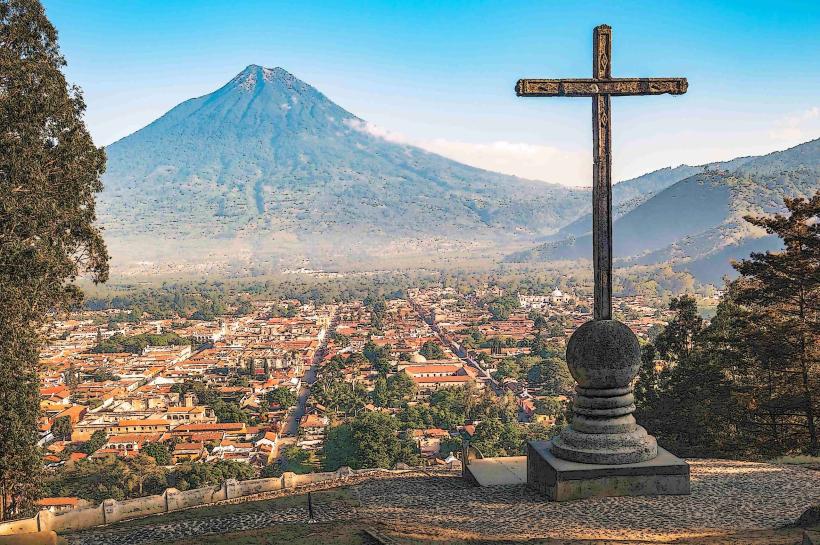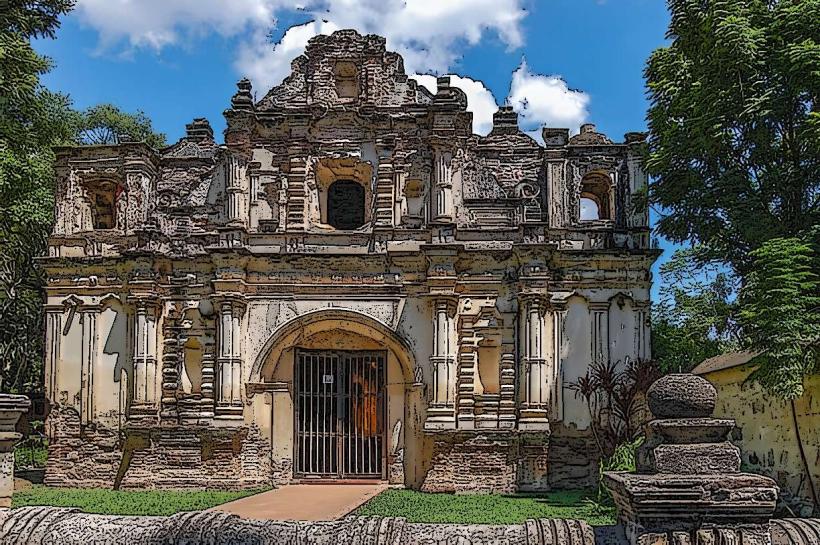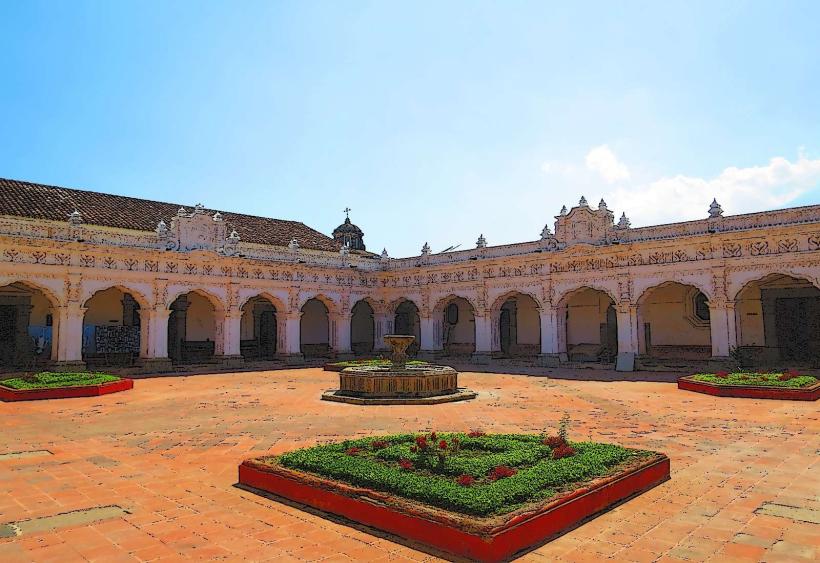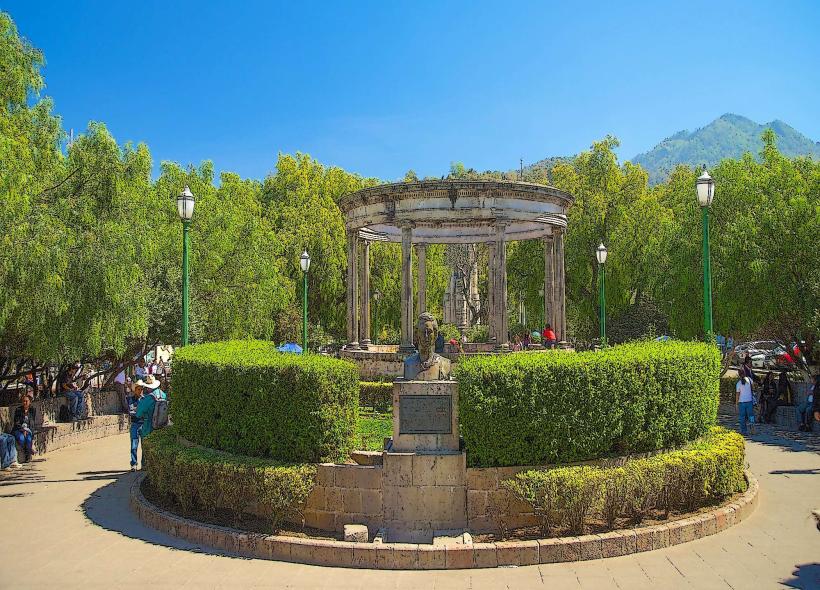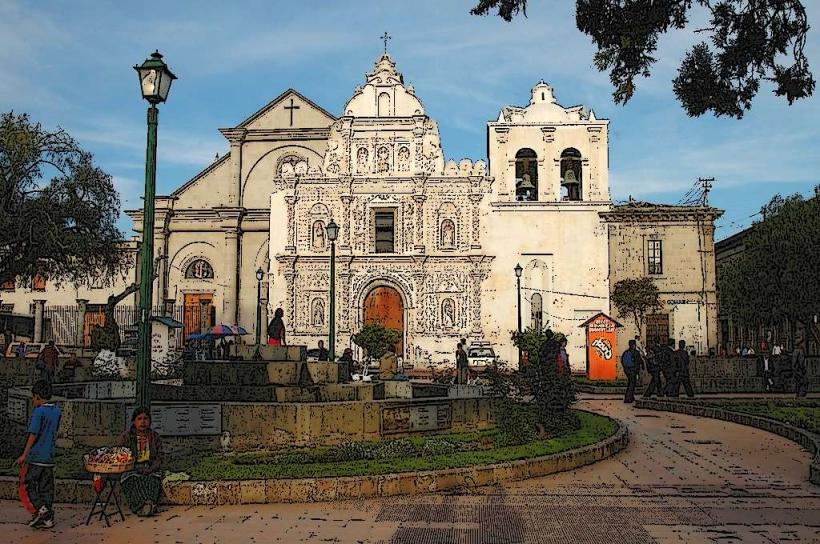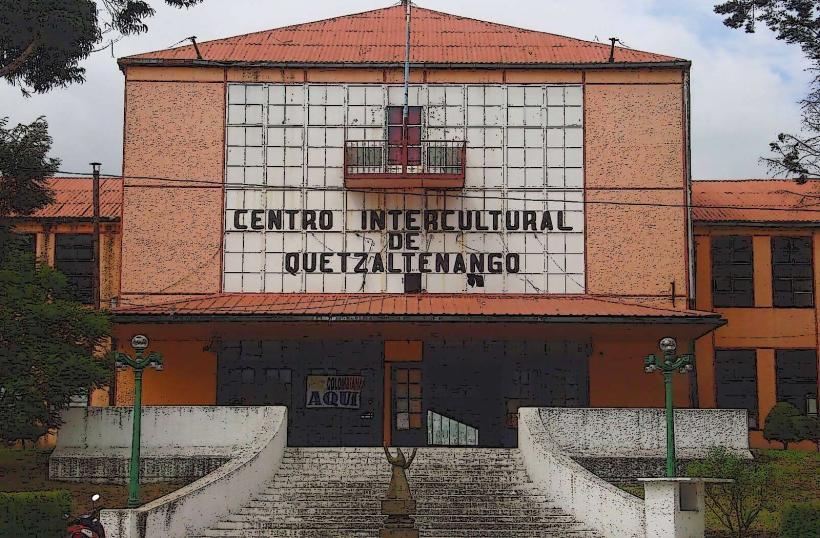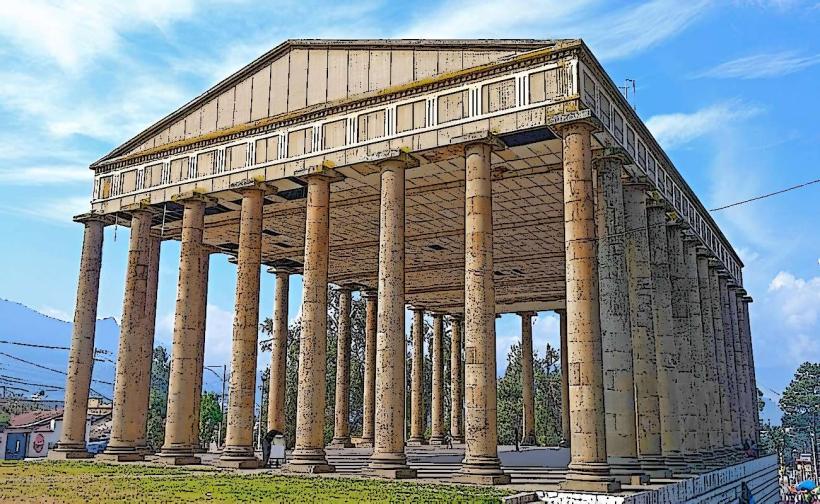Information
Country: GuatemalaContinent: North America
Guatemala is a country located in Central America, bordered by Mexico to the north and west, Belize to the northeast, Honduras to the east, and El Salvador to the southeast. It also has a coastline along the Pacific Ocean to the south. Guatemala is known for its rich history, particularly as the heartland of the ancient Maya civilization, its diverse cultures, and its stunning natural beauty.
Geography
- Location: Guatemala is positioned in the southern part of Central America, with a strategic location connecting North and South America. It spans a land area of around 108,889 square kilometers (42,042 square miles).
- Terrain and Landscape: The country is characterized by mountains, volcanoes, and plains. It is home to many active volcanoes, such as Pacaya, Fuego, and Atitlán, making it a land of dramatic topography. The Guatemalan Highlands are known for their lush forests, deep valleys, and high-altitude lakes, such as Lake Atitlán, which is considered one of the most beautiful lakes in the world.
- Rivers and Lakes: Guatemala has many rivers, including the Usumacinta and Motagua, which flow into both the Caribbean and Pacific Oceans. Lake Izabal, the largest lake in Guatemala, is located in the eastern part of the country.
History
- Ancient Maya Civilization: Guatemala is home to some of the most important archaeological sites of the ancient Maya civilization, which flourished in the region for over a thousand years. The Maya built great cities such as Tikal, Uxmal, and Copán, known for their monumental architecture, advanced knowledge of astronomy, and complex societal structure.
- Spanish Colonization: In the early 16th century, the Spanish conquistador Pedro de Alvarado conquered the region, beginning the period of Spanish colonization. The Spanish imposed their language, religion, and systems of governance on the indigenous populations, leading to centuries of exploitation and cultural transformation.
- Independence: Guatemala, along with the other Central American countries, gained independence from Spain on September 15, 1821. The region briefly formed part of the Mexican Empire before becoming part of the United Provinces of Central America, which eventually dissolved into individual nations, including Guatemala, in the mid-19th century.
- Modern History: Guatemala has experienced periods of political instability, including military dictatorships and a civil war from 1960 to 1996, which resulted in significant loss of life and displaced populations. The country signed the Peace Accords in 1996, which officially ended the civil conflict. Since then, Guatemala has made efforts toward democratization, although challenges such as corruption, poverty, and organized crime persist.
Economy
- Agriculture: Agriculture has historically been a mainstay of the Guatemalan economy, and the country is one of the leading producers of crops such as coffee, bananas, sugar, and vegetables. Coffee is a particularly important export and has been the backbone of the country's economy for many years.
- Textiles: Guatemala has a thriving textile industry, particularly in the production of clothing and apparel, much of which is exported to the United States. The textile sector is an important source of employment for the population.
- Tourism: Tourism is an important sector in Guatemala’s economy, driven by its rich cultural heritage, historical sites, and natural beauty. Antigua Guatemala, a UNESCO World Heritage site, attracts thousands of tourists annually. Tikal, the ancient Maya city, is one of the most famous archaeological sites in the world, drawing visitors with its towering pyramids and surrounding jungle.
- Mining and Industry: Mining is also a growing sector in Guatemala, with the country being a producer of nickel, gold, and silver. The industrial sector focuses on food processing, chemicals, and construction materials.
Culture
- Language: The official language of Guatemala is Spanish, but the country is home to 23 different Mayan languages spoken by indigenous communities. These include K'iche', Q'eqchi', and Mam, among others. Indigenous languages are often spoken in rural areas, and there are ongoing efforts to preserve and promote these languages.
- Music and Dance: Guatemalan music is a reflection of the country’s diverse cultural heritage. Traditional Mayan music includes the use of flutes, drums, and marimbas. The marimba, a wooden percussion instrument, is considered the national instrument. Traditional dances such as the Baile de la Conquista celebrate Guatemala's history and cultural influences.
- Cuisine: Guatemalan cuisine is a fusion of indigenous Maya traditions and Spanish colonial influences. Common ingredients include corn, beans, tomatoes, chiles, and squash. Traditional dishes include pepian (a spicy stew), kak'ik (turkey soup), and tamales. Guatemala is also known for its coffee, which is considered some of the best in the world.
- Religion: The majority of Guatemalans are Roman Catholic, with Protestantism being the second-largest religion. Indigenous Maya communities often blend Catholicism with traditional beliefs, creating a unique form of syncretic spirituality.
Society
- Education: Education in Guatemala is free and compulsory at the primary level. However, the education system faces challenges such as a lack of infrastructure, limited access in rural areas, and low completion rates at the secondary level. Indigenous populations often face barriers in accessing education, with many schools teaching exclusively in Spanish.
- Healthcare: Guatemala’s healthcare system is a mix of public and private providers. The public system provides services at low cost, but it often suffers from underfunding, overcrowding, and inadequate facilities. Many people in rural areas lack access to basic healthcare services, which has led to high rates of malnutrition and preventable diseases.
- Social Issues: Guatemala faces significant social challenges, including high levels of poverty, inequality, and crime. Indigenous populations are particularly affected by poverty, with many living in rural areas without adequate access to healthcare, education, and employment opportunities. Crime, especially gang violence, is also a concern in urban areas.
Government and Politics
- Political System: Guatemala is a constitutional republic with a president who serves as both head of state and government. The president is elected for a four-year term. The country has a multi-party system, but politics are often influenced by corruption and political polarization. The Congress of the Republic is a unicameral legislature, and the judicial system is independent.
- Recent Political Developments: Guatemala has faced ongoing political challenges, including corruption scandals and public distrust of government institutions. Protests and demonstrations are common, with citizens calling for greater accountability, improved security, and better public services.
- International Relations: Guatemala is a member of several international organizations, including the United Nations, the Organization of American States (OAS), and the Central American Integration System (SICA). It has strong ties with its Central American neighbors and has participated in regional efforts to address issues like poverty, migration, and security.
Transportation and Infrastructure
- Public Transport: Public transportation in Guatemala includes buses, "chicken buses" (converted school buses), and taxis. However, public transportation can be unreliable and unsafe in certain areas, especially in the capital, Guatemala City. Many people rely on private vehicles for transportation.
- Air Travel: Guatemala is served by several international airports, including La Aurora International Airport in Guatemala City, which is the busiest airport in the country. The airport provides international connections to North and Central America, as well as some flights to Europe.
- Roads and Highways: The country has a network of highways and rural roads, though road conditions can be poor, particularly in remote regions. The government has worked on improving the road infrastructure, but challenges like traffic congestion in urban areas and natural disasters can disrupt transportation.
Environmental Issues
- Deforestation: Guatemala is experiencing deforestation at an alarming rate, largely due to logging, agricultural expansion, and illegal land clearing. Deforestation threatens the country’s biodiversity and contributes to soil erosion and water scarcity.
- Biodiversity: Guatemala is home to a rich variety of ecosystems, from rainforests and cloud forests to coastal areas and wetlands. The country is a global hotspot for biodiversity and has established numerous protected areas to preserve its wildlife, including jaguars, monkeys, and diverse bird species.
- Climate Change: Guatemala is vulnerable to the impacts of climate change, including rising temperatures, prolonged droughts, and more intense storms and hurricanes. The country has been taking steps to address these challenges through environmental conservation and sustainable development initiatives.
Conclusion
Guatemala is a country with a deep cultural heritage, a rich history, and significant natural beauty. While it faces challenges related to poverty, inequality, and security, the Guatemalan people have demonstrated resilience and a commitment to preserving their cultural traditions. With its Mayan ruins, stunning landscapes, and vibrant culture, Guatemala remains a country of great importance in Central America, attracting visitors and scholars alike who are drawn to its rich past and potential for the future.

